In the first of these two articles showing paintings of Shakespeare’s play King Lear with a summary of its plot, I had reached the cliffs at Dover, where the blind Earl of Gloucester has been trying to throw himself to his death. His natural son Edgar, an outlaw as the result of a plot by his illegitimate half-brother Edmund, and not yet recognised by his father, has protected him from that. But Lear’s eldest daughter Goneril’s steward tried to kill Gloucester; Edgar killed the steward, who was carrying a letter in which Goneril incited Edmund to kill her husband, the Duke of Albany. Meanwhile, King Lear has been asleep after he had raged madly through his past.
Kent (still disguised as Caius) meets Cordelia. Lear is woken up by the sound of music, which at first makes him think that he has died and Cordelia is an angel. When he has recovered his wits he kneels to her in penitence and she begs his blessing.

This scene quickly became one of the most popular with painters. In about 1792, Robert Smirke showed Cordelia apparently kneeling to beg the blessing of her father in The Awakening of King Lear. There’s not a musician in sight.
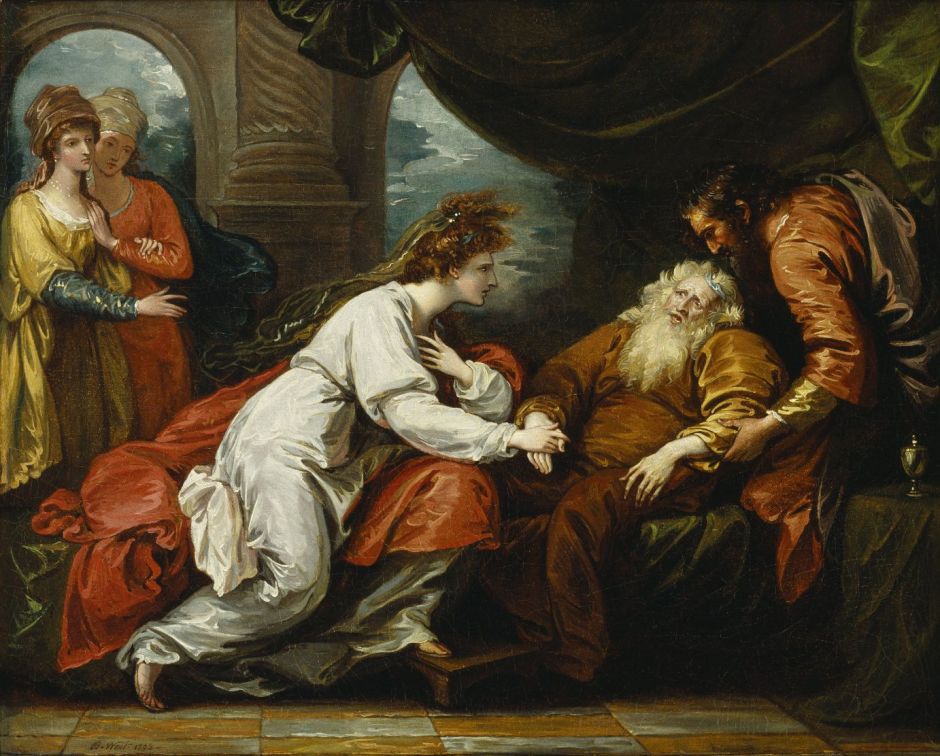
Benjamin West also keeps the musicians out in his King Lear and Cordelia from 1793. Like Smirke, he shows the king as a terrified old man.
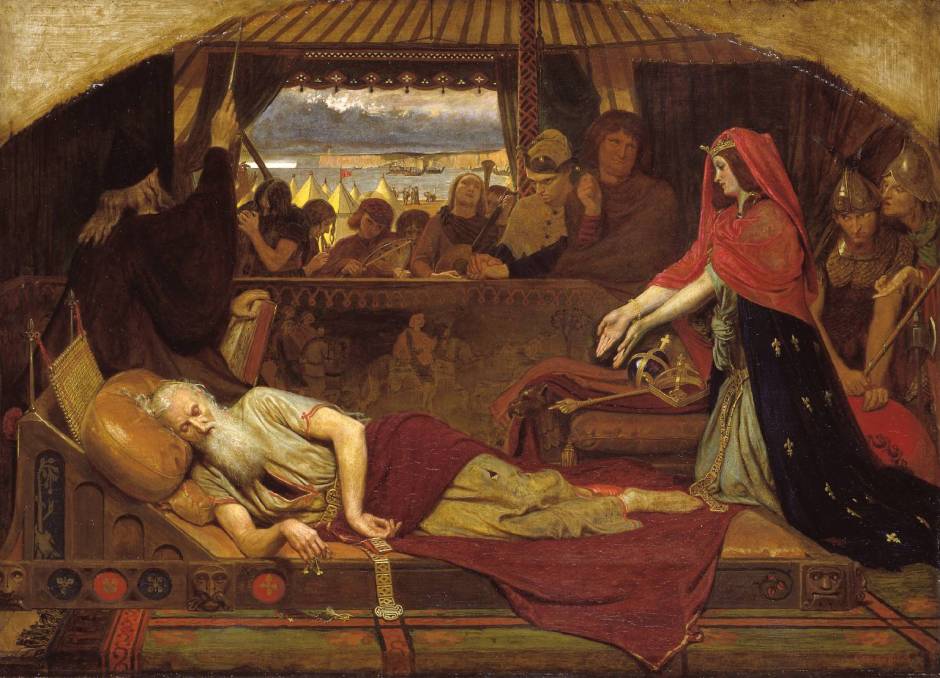
It was Ford Madox Brown, in his Lear and Cordelia from 1849-54, who captures the full scene. Cordelia, her clothes decorated with the fleur de lys of her suitor, wants her father to be left to sleep. But the wizard of a doctor waves his wand (or conductor’s baton?) at the orchestra outside their tent to encourage them to play loudly and wake the old man. In the distance are the tents of French forces and the white cliffs of Dover. Cordelia’s words of lament are inscribed in this painting’s frame.
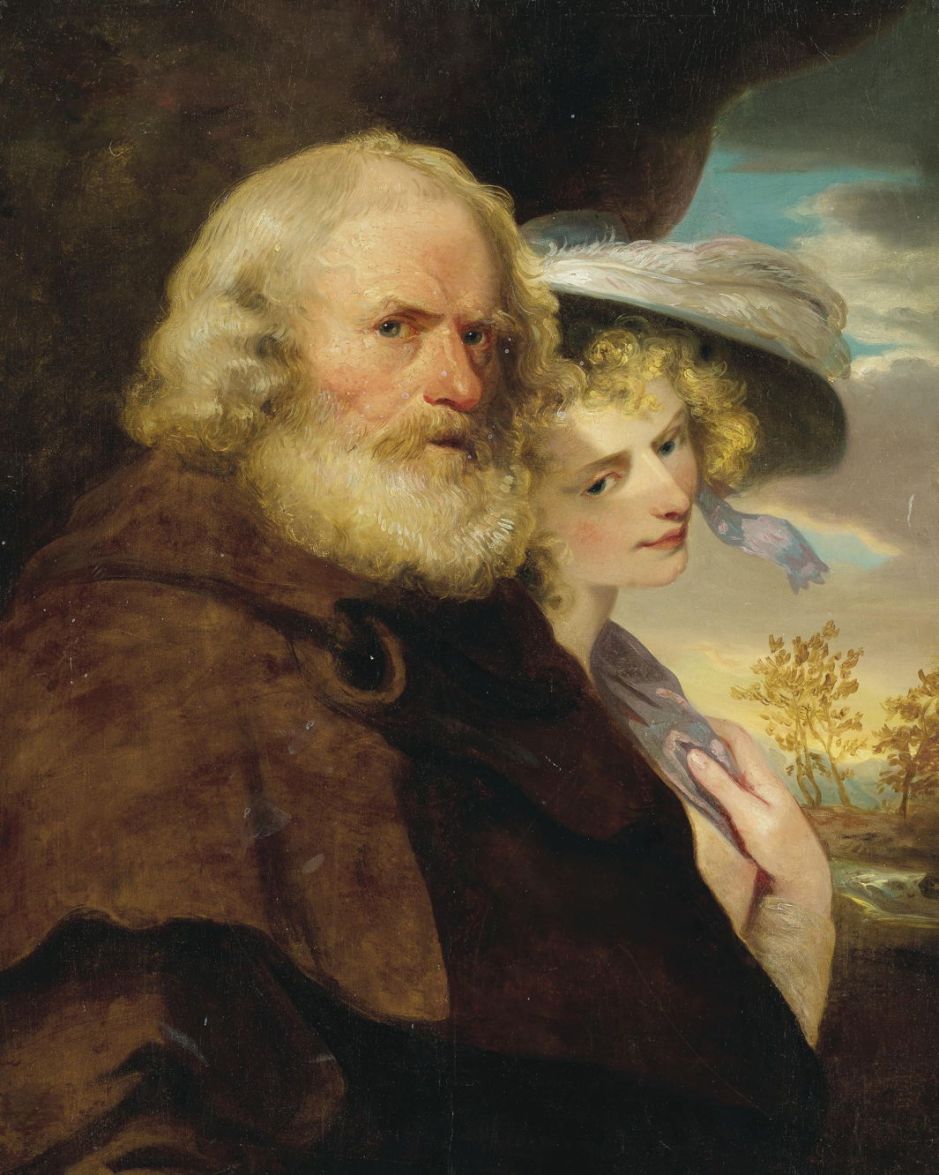
More unusual is Matthew William Peters’ modern double portrait of King Lear and Cordelia.
Regan asks Edmund if he has seduced Goneril, but he is evasive, and only admits to the audience that he has sworn love to both the sisters. His half-brother Edgar, posing as a peasant, gives Albany a letter to open before he goes to battle. The armies then join their fight, but Lear and Cordelia’s forces lose, and both are captured. Edmund leads them to prison, where he gives his captain orders for them to be killed.

Lear and Cordelia in Prison from about 1779 is one of William Blake’s earliest paintings in ink and watercolour, showing the old man sleeping on his daughter’s lap.
Albany demands that Edmund hands the two over, but Regan and Goneril support Edmund. Regan falls unwell and claims Edmund as her husband. Albany arrests Edmund and Goneril for high treason, but Regan becomes more unwell, the result of Goneril poisoning her. Edmund issues a challenge, which is answered by the disguised Edgar, who then mortally wounds his half-brother and reveals his identity. Goneril commits suicide and Regan dies of the poison administered by her sister. As Edmund is dying, he repents and reveals that he has given orders for Lear and Cordelia to be killed.
When they reach Lear, Cordelia is already dead in the king’s arms, although he had been able to kill their executioner. Lear then dies while grieving over the body of his youngest daughter. Albany asks Kent and Edgar to rule, but Kent says that he must follow his master.
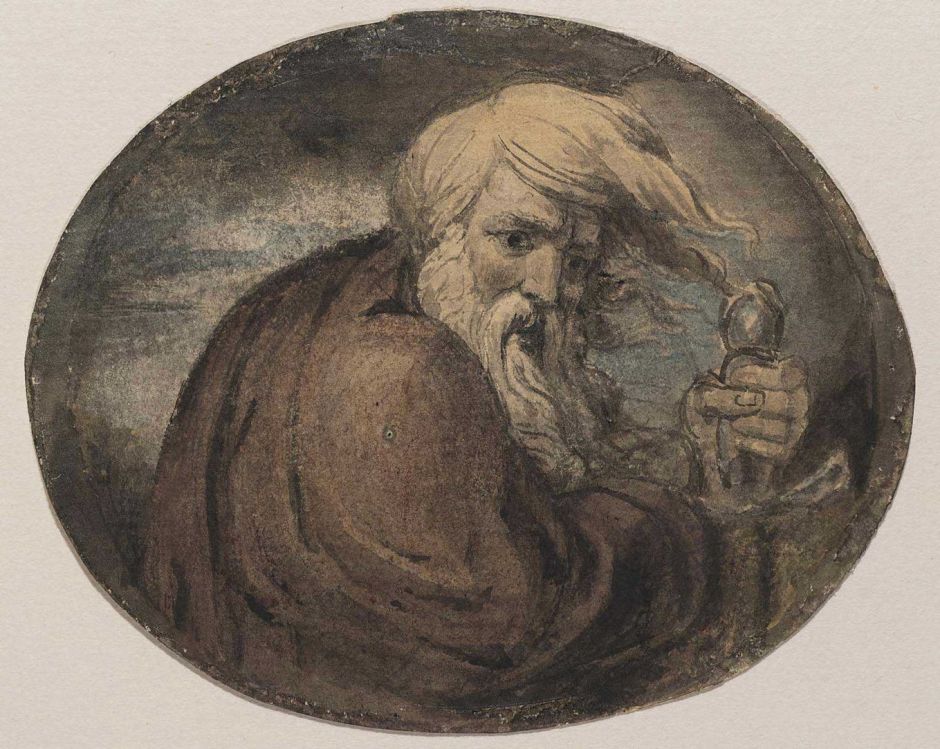
Blake’s Lear Grasping a Sword from about 1780 is another of his early works, and presumably shows the king in the act of killing Cordelia’s executioner.
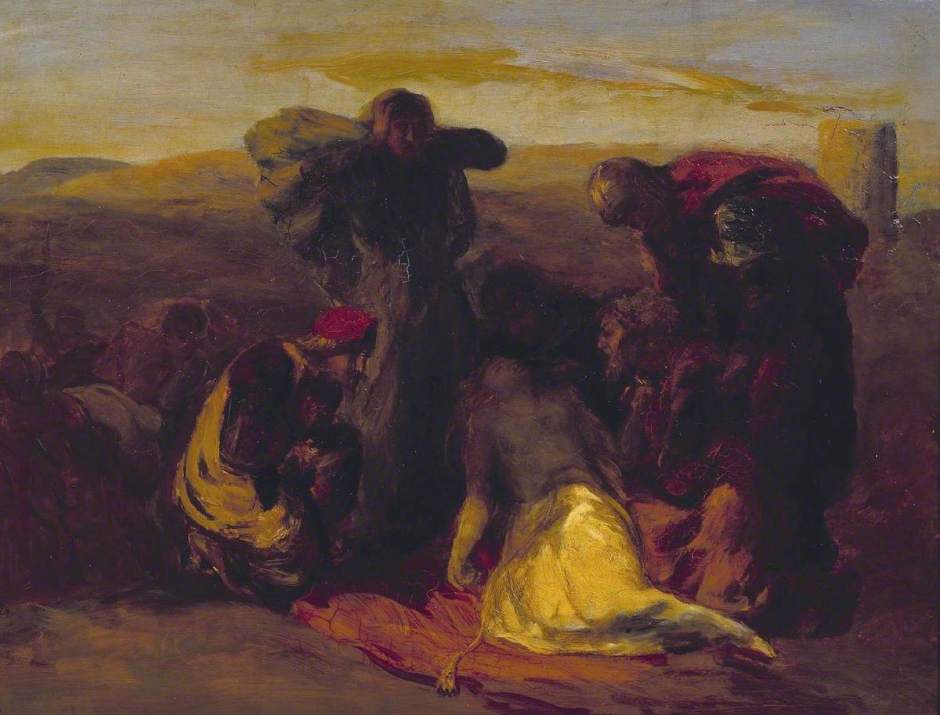
Paul Falconer Poole’s sketch of The Death of Cordelia from 1858 places the group outdoors, some distance from the tower in which Lear and Cordelia were imprisoned.
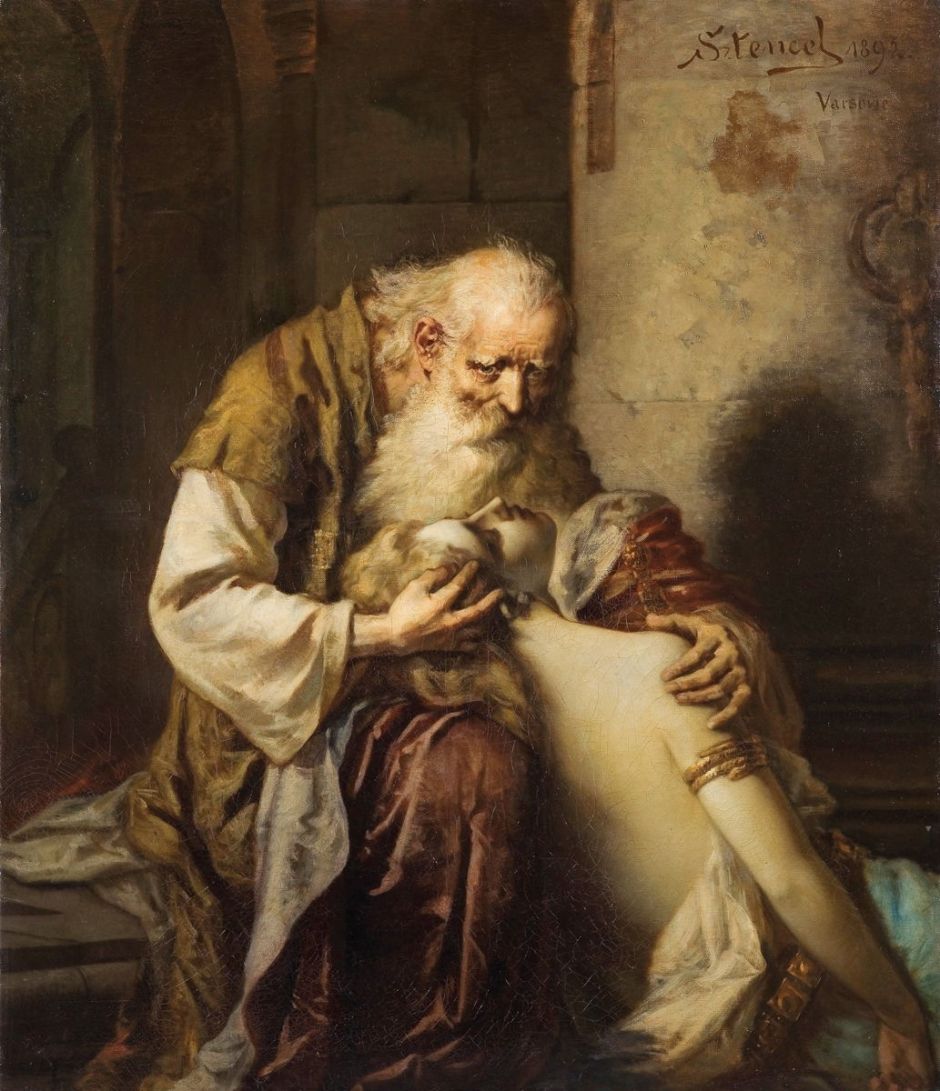
It’s perhaps Maurycy Sztencel, in his painting of King Lear and Cordelia from 1892 who is most faithful to Shakespeare, in showing the terrified old man clutching the body of the only daughter who really loved him, inside the massive stone walls of the prison.

James Barry’s King Lear Weeping over the Dead Body of Cordelia from 1786–8 shows three bodies: that of Cordelia is cradled by her father, while his other two daughters are almost being trampled on by the figures at the left. Behind them are strange megaliths which are quite out of place for Dover.
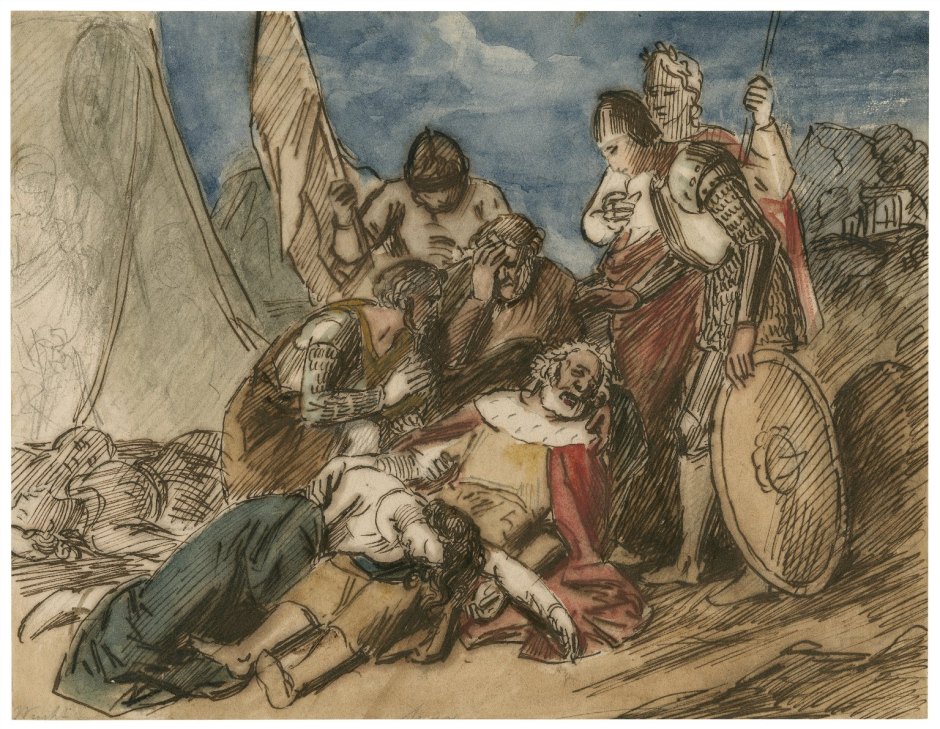
Finally, John Massey Wright’s undated sketch of The Death of King Lear, Cordelia Already Dead in his Arms shows the closing moments, with the bodies of Goneril and Regan at the left, and the king and his youngest daughter in the centre.
References
Wikipedia on Shakespeare’s play.
Full text at Project Gutenberg
Michael Dobson and Stanley Wells (eds) (2015) The Oxford Companion to Shakespeare, 2nd edn, Oxford UP. ISBN 978 0 19 870873 5.

